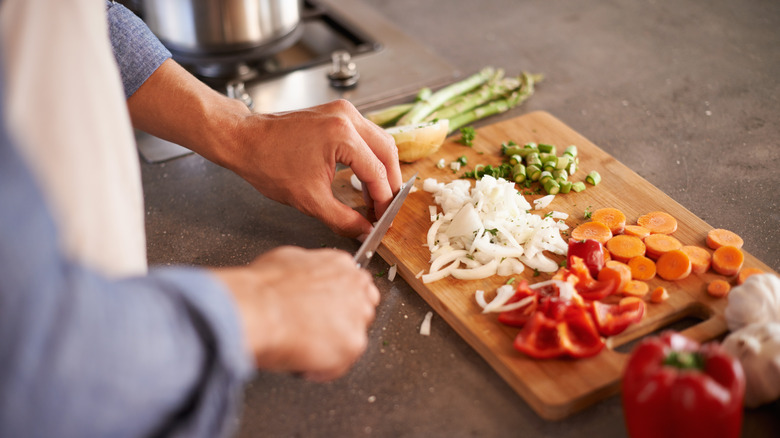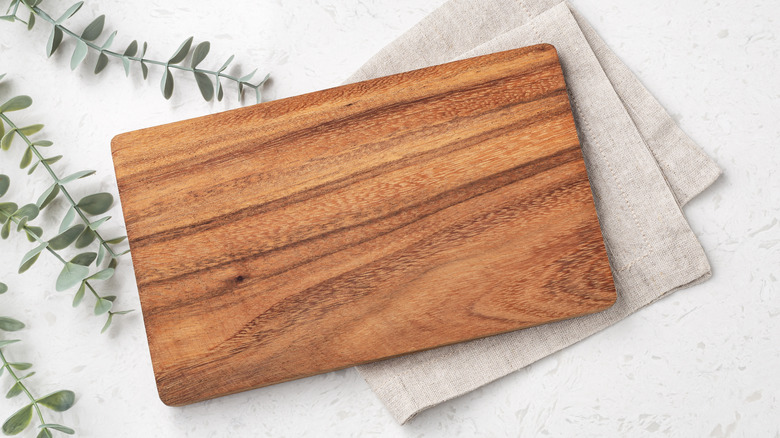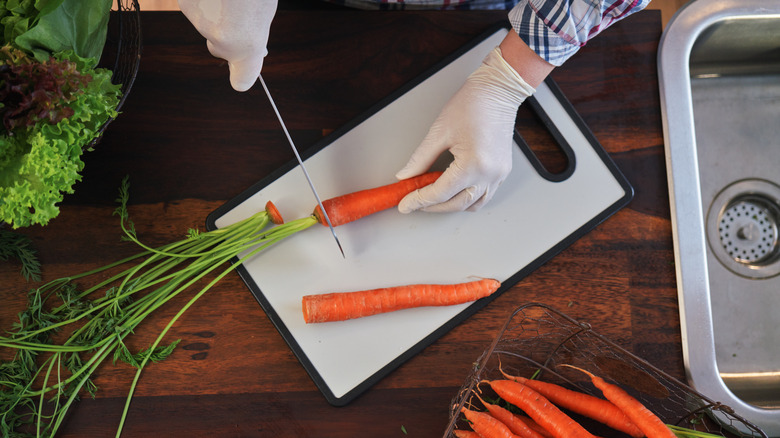When Buying A New Cutting Board, Pay Attention To The Material
Using a cutting board is a great way to protect your countertops and make clean-up a little easier. But when it's time to replace your cutting board, it's important to pay close attention to the material of your new purchase. Different kinds of cutting boards require different kinds of upkeep. So if you're switching from plastic to wooden, you'll need to adjust your maintenance routine.
While wooden cutting boards may be a little more durable and nicer looking than plastic, they require extra work to keep clean. Thicker plastic cutting boards, however, might get clean from simply running through a dishwasher cycle. Plastic cutting boards should be replaced every two years, while wooden varieties may last longer when properly treated.
If you're looking for an extra durable cutting board, bamboo might be the answer. Bamboo boards don't absorb as much liquid as their hardwood counterparts, since the wood is less porous, which could protect foods from cross-contamination risks — so long as the board is properly sanitized after every use. If you'd rather stick to a classic hardwood or plastic cutting board, though, both have benefits and drawbacks.
Wooden boards need a little extra effort to maintain
Wooden cutting boards are generally more aesthetically pleasing. They look nice enough for building a charcuterie board, and you can leave them out on display even when not in use. Additionally, they are typically more durable than plastic cutting boards, so they won't need to be replaced as often.
The drawback? Most types of wood are fairly porous, which means the board will soak up juices and liquids from whatever you're cutting. For this reason, it is often recommended to use plastic cutting boards when dealing with raw meat, and a second board for other ingredients like fruits and veggies. Wooden boards also require a little extra upkeep. To deep clean a wooden cutting board, you can wash it by hand with dish soap and water, but you'll also need to regularly oil the board to refresh it. Laminated wooden boards should never be washed in the dishwasher because they can crack.
With enough use over time, wooden cutting boards may develop scratches on the surface. Those scratches can be self-healing, though the board may eventually need to be sanded down to restore its original appearance.
Less upkeep may mean a shorter lifespan
While a wooded cutting board may seem like an upgrade, there's certainly no shame in sticking with a more affordable alternative. Plastic, acrylic, and glass cutting boards are beneficial, especially when handling raw proteins, because they're non-porous. This means they won't soak up liquids, which lowers the risk of cross-contamination. And, depending on the material of the board, you may be able to simply slide it in the dishwasher to sanitize it after use.
One drawback of plastic, glass, or acrylic cutting boards is that they may not look as nice when used for serving up a charcuterie board at your next dinner party. Additionally, plastic cutting boards can gather stains and scratches if frequently used. Those scratches could even play host to plenty of bacteria if not properly cleaned. So if your plastic board is looking a little worse for wear, you may want to replace it before hitting that two-year mark.
Regardless of what kind of cutting board you choose, pay attention to the proper care and upkeep. Maintaining your cutting board according to its specific requirements will help ensure you get the longest life out of the board.


